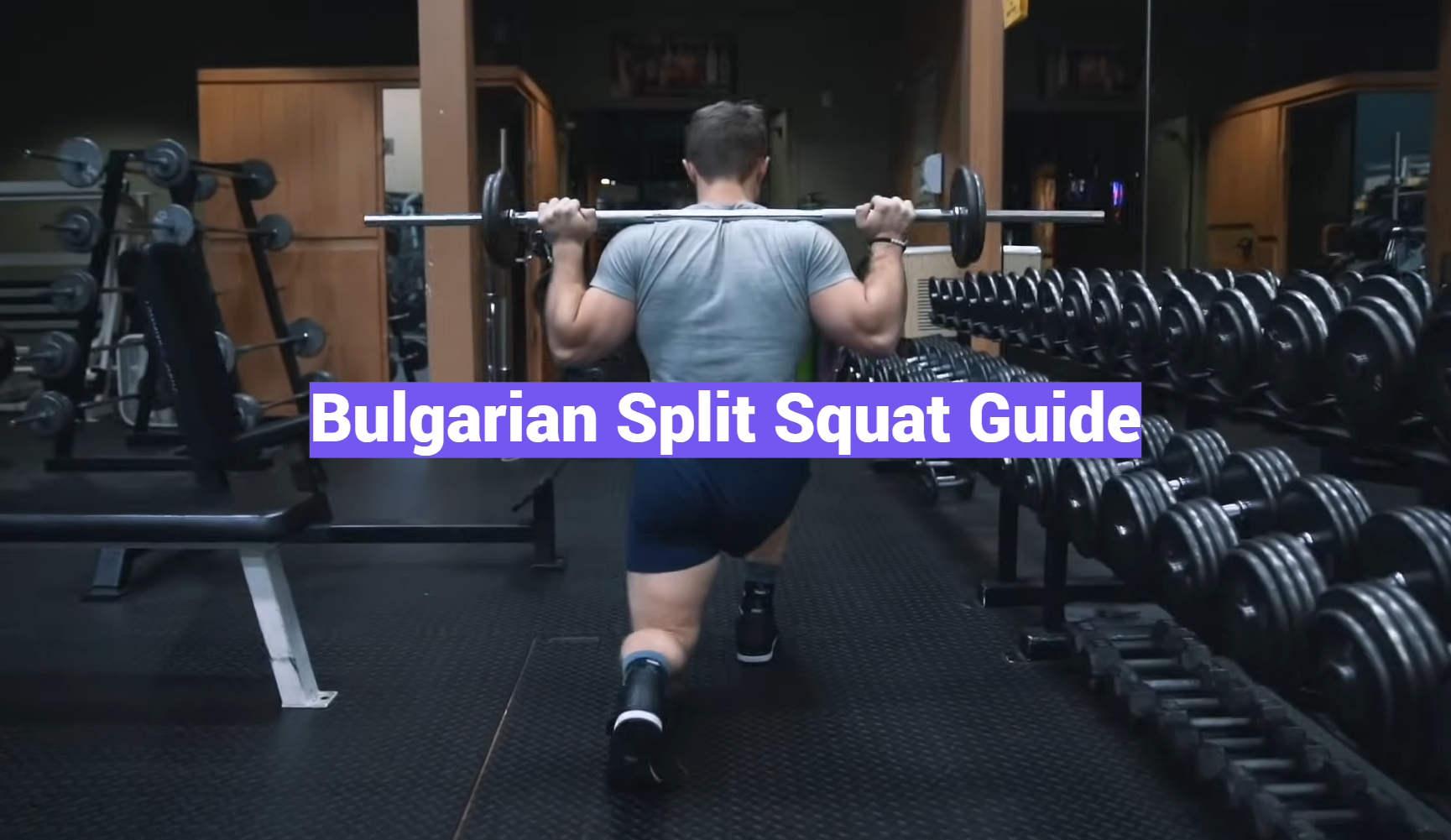The Bulgarian split squat, a powerful lower body exercise, is an exceptional movement for enhancing strength, balance, and mobility. It targets your quads, glutes, and hamstrings, providing a comprehensive workout for your lower body. This exercise does not merely improve muscle tone, but also aids in injury prevention by promoting unilateral strength and stability. In this guide, we delve into the nuances of the Bulgarian split squat, offering a step-by-step walkthrough, tips for proper form, and common mistakes to avoid.
Overview of Bulgarian Split Squats
Bulgarian split squats are a popular exercise among fitness enthusiasts and athletes due to their effectiveness in building lower body strength, stability, and balance.
Originating from Bulgarian Olympic weightlifting coach Angel Spassov, this single-leg movement is a variation of the traditional squat that places more emphasis on the quads and glutes while also engaging the core and hip stabilizers.
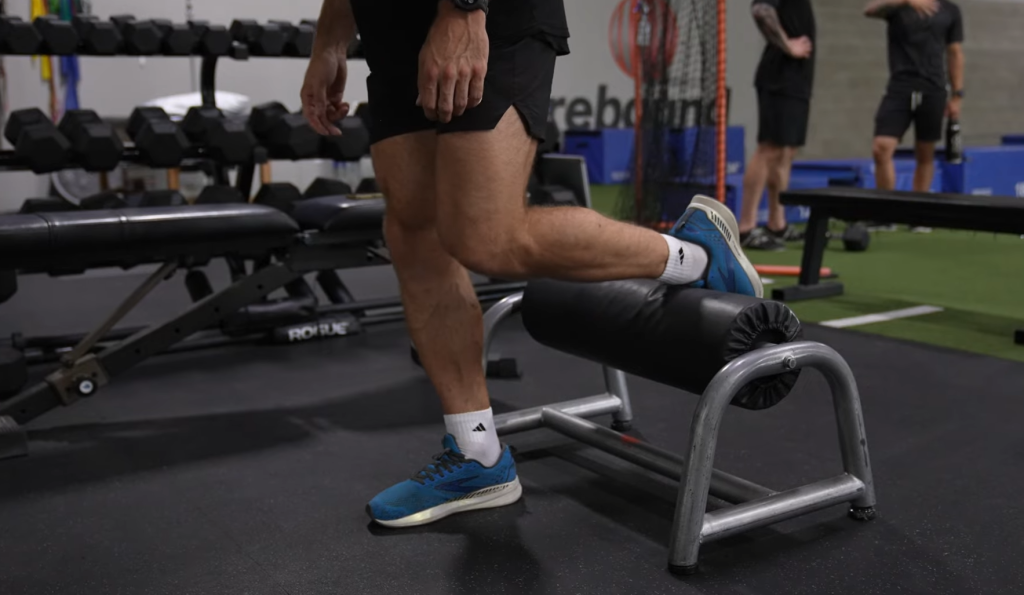
How to Perform Bulgarian Split Squats
- Begin by standing facing away from a bench or elevated surface.
- Place the top of one foot on the bench, with your shoelaces down and your toes pointed towards the ground.
- Take a large step forward with your other leg, keeping your chest up and core engaged.
- Slowly lower your body by bending at the knee, until your thigh is parallel to the ground.
- Push through your front foot to return to starting position.
- Repeat for desired number of reps and switch legs. [1]
Benefits of Bulgarian Split Squats
- Increases lower body strength and muscle mass in the quads, glutes, hamstrings, and calves.
- Improves balance and stability due to the single-leg movement.
- Engages the core muscles for added strength and stability.
- Can help improve hip mobility and flexibility.
- Can be modified for different fitness levels by adjusting the height of the elevated surface or adding weights.
Tips for Proper Form
- Keep your chest up and shoulders back throughout the movement to maintain proper posture.
- Make sure your front knee does not go past your toes to avoid unnecessary strain on the knee joint.
- Engage your core and keep your hips level to prevent any twisting or leaning during the exercise.
- Focus on a slow and controlled movement, rather than rushing through the reps for maximum effectiveness.
- Keep your gaze forward and avoid looking down at the ground to maintain proper alignment of the spine. [2]
Variations of Bulgarian Split Squats
- Goblet Bulgarian Split Squat: Hold a dumbbell or kettlebell close to your chest as you perform the exercise for added resistance.
- Rear-foot Elevated Bulgarian Split Squat: Place your back foot on a higher surface, such as a chair or box, to increase the difficulty of the exercise.
- Bulgarian Split Squat Jumps: As you push through your front foot to return to starting position, add a jump for an extra plyometric challenge.
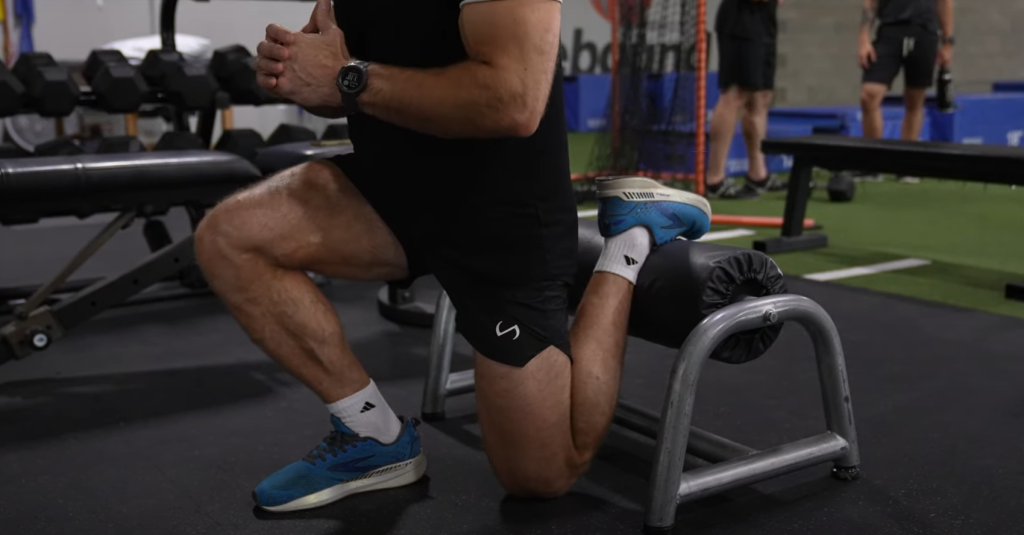
Incorporating Bulgarian Split Squats into Your Workout
Bulgarian split squats can be incorporated into your lower body workout routine or as part of a full-body circuit. Start by performing 3 sets of 8-12 reps on each leg, and gradually increase the number of sets and reps as you become stronger. You can also incorporate different variations of Bulgarian split squats to keep your workouts challenging and prevent plateaus.
Muscles Worked during Bulgarian Split Squats
- Quads: The quadriceps muscles are the primary movers in this exercise, as they are responsible for extending the knee.
- Glutes: The gluteus maximus and medius muscles are engaged to stabilize the hip joint and assist in leg extension.
- Hamstrings: The hamstrings work with the quads to extend the knee and maintain stability throughout the movement.
- Core: The core muscles are engaged to maintain balance and stability during the single-leg movement. [3]
Common Mistakes and Tips for Better Form
- Allowing the front knee to go past the toes can put unnecessary strain on the knee joint. Instead, focus on pushing through the heel of your front foot and keeping your weight in your heels.
- Leaning or twisting during the exercise can lead to improper form and potential injury. Keep your core engaged and hips level to maintain stability throughout the movement.
- Rounding your back or looking down can put strain on the spine. Keep your chest up and gaze forward to maintain proper alignment.
- Rushing through the exercise and sacrificing form for speed will not effectively work the targeted muscles. Focus on a slow and controlled movement for maximum benefit.
Tips and Tricks for Better Execution
- When performing Bulgarian split squats, it can be helpful to imagine you are pushing the ground away from you as you stand up.
- To prevent any discomfort or slipping, make sure your shoelaces are securely tucked into your shoe before starting the exercise.
- You can use a towel or mat under your supporting knee for added cushioning and support during the movement.
Precautions and Safety Measures
- As with any exercise, it is important to start with a proper warm-up and stretch before performing Bulgarian split squats.
- If you have any knee or hip injuries, consult with a medical professional before attempting this exercise.
- Always maintain proper form to prevent potential injury. If you experience any pain or discomfort while performing Bulgarian split squats, stop immediately and seek guidance from a fitness professional.
- As you progress and increase weight or intensity, make sure to listen to your body and adjust accordingly. Do not push yourself beyond your limits and risk injury.

Top 17 Bulgarian Split Squat Variations and How to Perform Them
- Bulgarian Split Squat with a Dumbbell:Hold a dumbbell in each hand and perform the exercise as described above.
- Side Lunge Bulgarian Split Squat:Begin by standing with your feet shoulder-width apart, then step one foot out to the side into a lunge position. Perform the split squat on this leg before returning to starting position and switching to the other leg.
- Bulgarian Split Squat with a Barbell:Hold a barbell across your upper back and perform the exercise as described above.
- Side-to-Side Bulgarian Split Squat Jumps:Start in a split squat position, then jump and switch legs in mid-air before landing in a split squat on the opposite side.
- Bulgarian Split Squat with a Resistance Band:Secure a resistance band around your front foot and hold the other end in each hand as you perform the exercise.
- Single-Leg Elevated Deadlift to Bulgarian Split Squat:Hold a dumbbell in one hand and start by performing a single-leg deadlift, then immediately go into a Bulgarian split squat on the same leg.
- Bulgarian Split Squat with a Medicine Ball:For enhanced resistance during the exercise, keep a medicine ball close to your chest.
- Bulgarian Split Squat with Knee Drive:As you stand up from the split squat, drive your back knee up towards your chest before returning to starting position.
- Bulgarian Split Squat with Overhead Press:While standing up from the split squat, hold a dumbbell in each hand and execute an overhead press.
- Bulgarian Split Squat with Tricep Extension:Hold a dumbbell in each hand and perform a tricep extension as you stand up from the split squat.
- Bulgarian Split Squat with Bicep Curl:While rising from the split squat, hold a dumbbell in each hand and execute a bicep curl.
- Hamstring Curls in Bulgarian Split Squat Position:Start in a Bulgarian split squat position, then bend your back knee to bring your foot towards your glutes before returning to starting position.
- Bulgarian Split Squat with a Kettlebell:Hold a kettlebell in one hand and perform the exercise, switching hands for each set.
- Bulgarian Split Squat with Front Raise:While standing up from the split squat, hold a dumbbell in each hand and execute a front raise.
- Bulgarian Split Squat with Lateral Raise:Hold a dumbbell in each hand and perform a lateral raise as you stand up from the split squat.
- Bulgarian Split Squat with Reverse Fly:While standing up from the split squat, hold a dumbbell in each hand and execute a reverse fly.
- Bulgarian Split Squat with Shoulder Press:Hold a dumbbell in each hand and perform a shoulder press as you stand up from the split squat. [4]
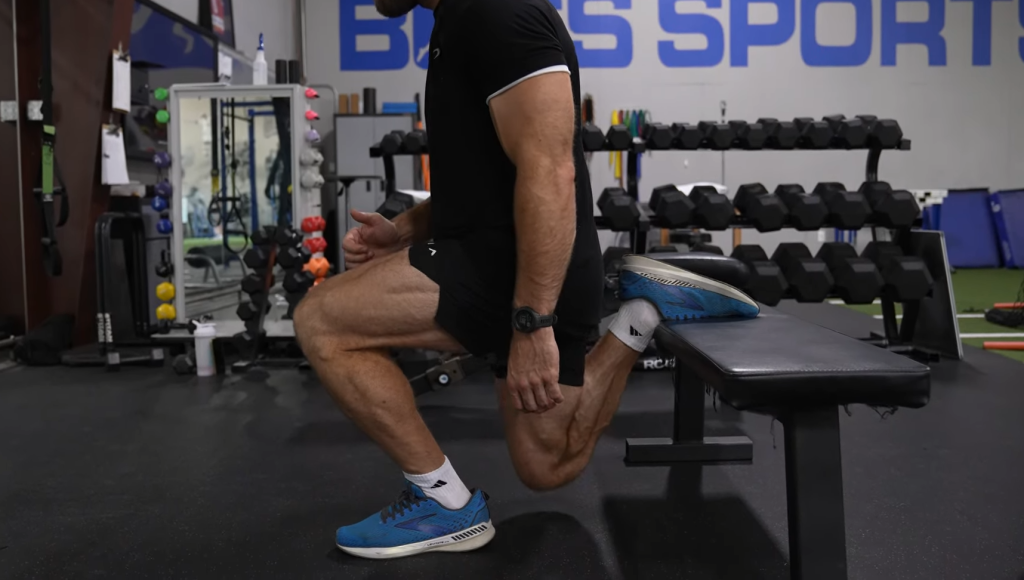
What Sets Apart a Lunge from a Bulgarian Split Squat?
Both lunges and Bulgarian split squats are effective lower body exercises that target similar muscle groups. However, there are a few key differences between the two movements.
- Stance:In a lunge, your feet remain planted on the ground and you step forward with one leg while keeping your other foot in place. In a Bulgarian split squat, your front foot is elevated on a bench, step, or other platform.
- Balance and Stability:Lunges require more balance and stability as you move in a forward direction. Bulgarian split squats place less demand on balance since your front foot is secured on an elevated surface.
- Range of Motion:In a lunge, you can step forward to varying distances and work through different ranges of motion. In a Bulgarian split squat, the elevated front foot limits your range of motion to a certain level.
- Targeted Muscles: While both exercises target the quads, glutes, and hamstrings, lunges primarily work the hip flexors while Bulgarian split squats focus more on the quadriceps.
Ultimately, incorporating both lunges and Bulgarian split squats into your lower body workouts can provide a well-rounded and challenging routine.
How Many Bulgarian Split Squats Are Good?
The number of Bulgarian split squats you should perform depends on your fitness level, goals, and the specific variations you are including in your workout. As a general guideline, aim for 8-12 reps per set for 2-3 sets with proper form and technique. You can always adjust the number of reps and sets to suit your individual needs and preferences. Remember, it’s important to listen to your body and not push yourself beyond your limits. Start with a lower number of reps and gradually increase as you become more comfortable with the exercise. Always prioritize proper form over quantity.
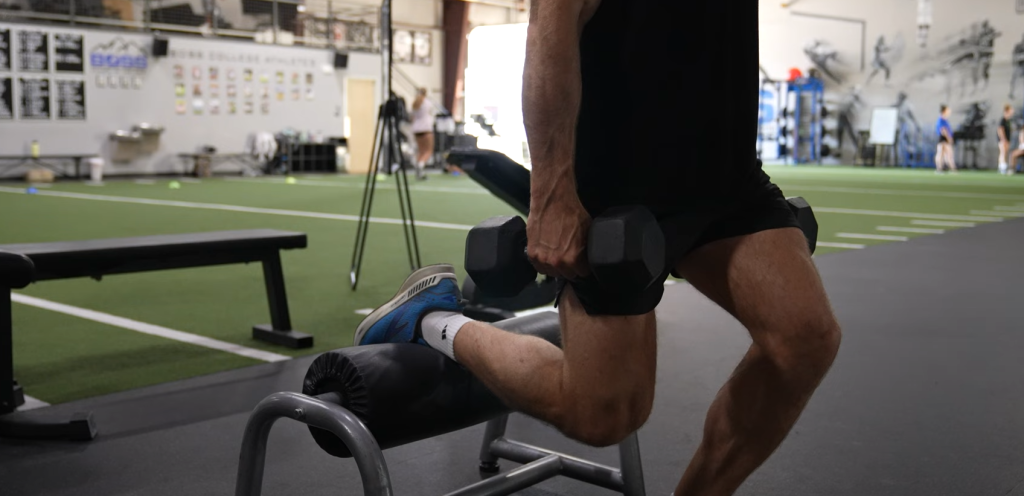
Is 50kg Bulgarian Split Squat Good?
As with the number of reps mentioned above, the weight used for Bulgarian split squats will vary depending on individual fitness level and goals. 50kg (110 lbs) may be a good weight for someone who is experienced with strength training and has been consistently working on their Bulgarian split squat form. However, it may be too heavy for someone new to the exercise or those who are still building strength. The key is to gradually increase weight while maintaining good form and not overexerting yourself. It’s always best to start with a lighter weight and work your way up as you become more comfortable and confident in the exercise. Always listen to your body and adjust accordingly.
Can You Do Bulgarian Split Squat Everyday?
It is not recommended to do Bulgarian Split Squats every day, as with any exercise. Our muscles need time to rest and recover in order to avoid overtraining and potential injuries. As a general rule, it’s best to have at least one or two days of rest between working the same muscle group. However, if you want to incorporate Bulgarian split squats into your daily routine, consider alternating between different variations to give your muscles a break and allow for proper recovery. Additionally, always make sure to prioritize rest and recovery days in your overall workout schedule. Remember, quality over quantity is key when it comes to exercise.
Do Bulgarian Split Squats Grow Glutes?
Bulgarian split squats, also known as Bulgarian split lunges or single-leg split squats, are a popular exercise for targeting the glutes. This unilateral movement requires significant stability and strength from the glute muscles to perform properly.
While many exercises can contribute to overall glute growth, Bulgarian split squats are particularly effective in targeting the glutes due to their unilateral nature. This means that each leg is working independently, forcing the glute muscles to engage and work harder to maintain balance and stability.
In addition to targeting the glutes, Bulgarian split squats also engage other muscle groups such as the quads, hamstrings, and core, making it a compound exercise that can help build overall lower body strength.
It’s important to note that while Bulgarian split squats can contribute to glute growth, they should not be the sole exercise in a glute-focused workout routine. It’s important to incorporate a variety of exercises and techniques to effectively grow and strengthen the glutes.
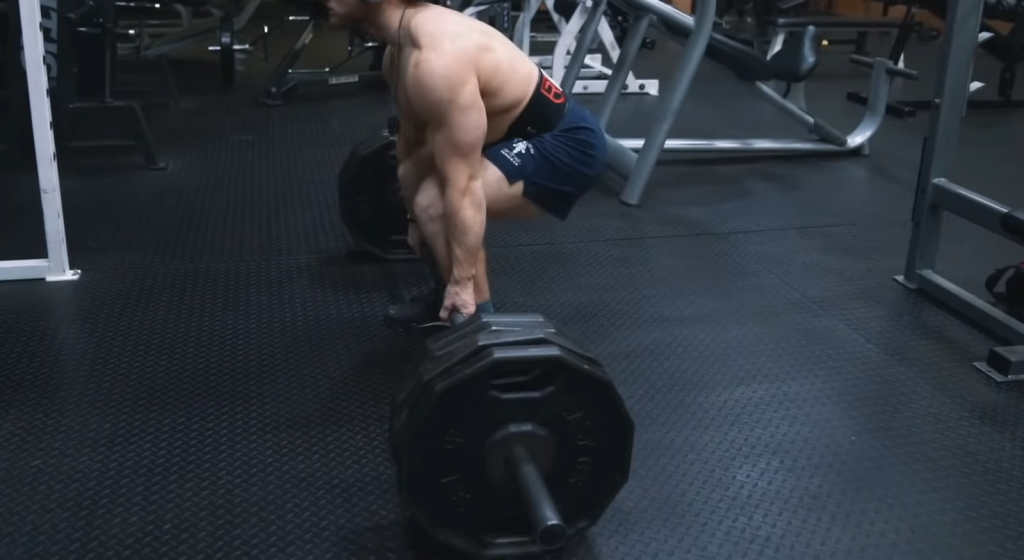
Some tips for maximizing glute activation during Bulgarian split squats include:
- Focusing on pushing through the heel of the front foot
- Maintaining an upright torso and avoiding leaning forward
- Squeezing the glutes at the top of the movement
- Using a challenging weight or resistance to increase muscle activation
Overall, while Bulgarian split squats can be a useful exercise in building glute strength and size, they should be used in conjunction with other exercises for best results. As always, proper form and technique are key in any exercise routine to prevent injury and achieve desired results. So, don’t forget to consult a certified trainer for guidance if you’re new to this exercise or have any concerns. Keep squatting those Bulgarian split squats for strong, shapely glutes! [5]
Additional Tips for Glute Growth
In addition to incorporating Bulgarian split squats into your workout routine, there are other techniques that can help maximize glute growth. These include:
- Varying the range of motion: By modifying the range of motion, you can target different areas of the glutes and make sure all muscle fibers are being activated.
- Progressive overload: This involves gradually increasing weight or resistance over time to continuously challenge and stimulate muscle growth.
- Incorporating other glute-specific exercises: Exercises such as hip thrusts, kickbacks, and sumo squats can also be effective in targeting the glutes and should be incorporated into a well-rounded glute-focused routine.
- Engaging in proper recovery: Adequate rest and nutrition are crucial for muscle growth. Make sure to prioritize rest days and consume enough protein to fuel muscle growth and repair.
- Keeping a balanced workout routine:It’s important to not neglect other muscle groups while focusing on the glutes. Make sure to incorporate exercises for all major muscle groups for overall strength and balance in your physique.
By incorporating these tips into your Bulgarian split squat routine, you can ensure maximum glute activation and growth. However, it’s important to remember that everyone’s body is different and results may vary. Stay consistent, listen to your body, and adjust as needed for the best possible results.
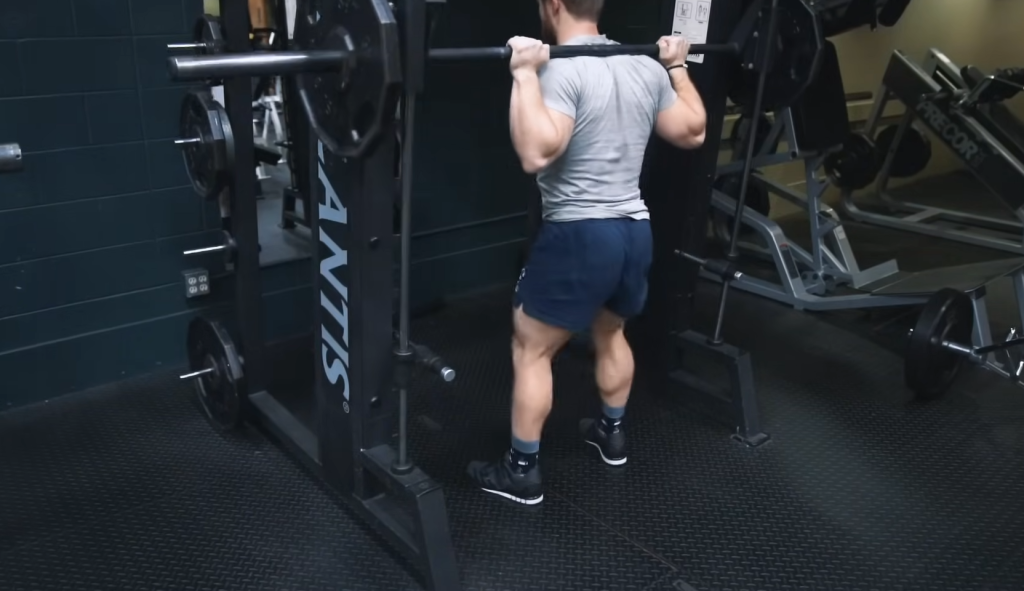
FAQs
What is a Bulgarian Split Squat?
A Bulgarian split squat is a single-leg exercise that targets the quads, glutes, and core. It involves standing on one leg with the other elevated behind you while performing a squat motion.
What equipment do I need to perform Bulgarian Split Squats?
Bulgarian split squats can be performed with just your bodyweight, or you can use equipment such as dumbbells, resistance bands, or a barbell to add resistance. A stable surface or bench is also needed to elevate your back foot during the exercise.
How does performing Bulgarian Split Squats benefit me?
Bulgarian split squats help improve balance, stability, and single-leg strength. They also target and strengthen key muscles in the lower body such as the quads, glutes, and hamstrings. Additionally, Bulgarian split squats can help improve athletic performance and prevent injury by addressing muscle imbalances between the left and right side of the body.
Can anyone perform Bulgarian Split Squats?
While there are variations and modifications that can be made, it is important to consult with a medical professional before attempting this exercise if you have any knee or hip injuries. Always listen to your body and make necessary adjustments to ensure proper form and prevent injury.
How many repetitions and sets should I do for Bulgarian Split Squats?
The number of repetitions and sets can vary depending on fitness level, goals, and the weight being used. However, a general recommendation is 3-4 sets of 8-12 repetitions on each leg. As you progress and increase weight or intensity, it is important to adjust accordingly and not push beyond your limits.
How often should I incorporate Bulgarian Split Squats into my workout routine?
Bulgarian split squats can be incorporated into lower body workouts 1-2 times a week for maximum benefit. It is important to also allow for proper rest and recovery between workouts.
What muscles does the Bulgarian Split Squat work?
Bulgarian split squats primarily target the quads, glutes, and hamstrings. However, it also engages other muscles in the lower body such as the calves, core, and hip stabilizers.
Are Bulgarian Split Squats safe for beginners?
Like any exercise, proper form and technique are crucial to prevent injury. While Bulgarian split squats can be modified for beginners, it is important to learn the proper form and progress slowly as strength and stability increases. It is also recommended to seek guidance from a professional before attempting this exercise if you are new to fitness or have any concerns about performing it safely.
What are the common mistakes to avoid while doing Bulgarian Split Squats?
Some common mistakes to avoid while performing Bulgarian split squats include: not keeping the chest up and shoulders back, allowing the front knee to go past the toe, leaning too far forward or backward, and using momentum instead of controlled movements. It is important to focus on proper form and technique rather than trying to complete a high number of repetitions. It may also be beneficial to start with bodyweight or lighter weights and gradually increase as strength and stability improve.
Can Bulgarian Split Squats be used for rehabilitation purposes?
Yes, Bulgarian split squats can be used for rehabilitation purposes as they target specific muscles in the lower body while also improving balance and stability. However, it is important to consult with a medical professional before incorporating this exercise into a rehabilitation program and make necessary modifications as needed.
Whether you are an athlete looking to improve performance or someone wanting to strengthen their lower body, Bulgarian split squats can be a beneficial addition to your workout routine.
Can Bulgarian Split Squats replace regular squats in my routine?
Bulgarian split squats are a great exercise to incorporate into your routine, but they should not replace regular squats entirely. Regular squats target the entire lower body in one motion, while Bulgarian split squats isolate one leg at a time. Both exercises have their own benefits and it is recommended to include both in a well-rounded workout routine.
Are there any variations of the Bulgarian Split Squat?
Yes, there are several variations of the Bulgarian split squat that can be incorporated into a workout routine. Some include using different equipment such as kettlebells or resistance bands, adding upper body movements like front raises or shoulder presses, and performing the exercise on an unstable surface for an added challenge. It is important to continually challenge the body and switch up exercises to prevent plateauing.
Conclusion
Bulgarian split squats are a versatile and effective exercise for targeting key muscles in the lower body, improving balance and stability, and preventing injury. It is important to use proper form and technique when performing this exercise to ensure safety and effectiveness. With variations and modifications available, Bulgarian split squats can be incorporated into any fitness routine to challenge the body and see results. Consult with a medical professional if you have any concerns before attempting this exercise and always listen to your body. Now, go give those legs a good workout!
Useful Video: How to do a Bulgarian Split Squat / Proper Setup
References:
- https://www.verywellfit.com/how-to-do-a-bulgarian-split-squat-4589307
- https://thatfitfriend.com/bulgarian-split-squat-guide/
- https://www.coachweb.com/leg-exercises/199/bulgarian-split-squat-instructions-form-tips-and-variations
- https://www.spotebi.com/exercise-guide/bulgarian-split-squat/
- https://experiencelife.lifetime.life/article/break-it-down-how-to-do-the-bulgarian-split-squat/

